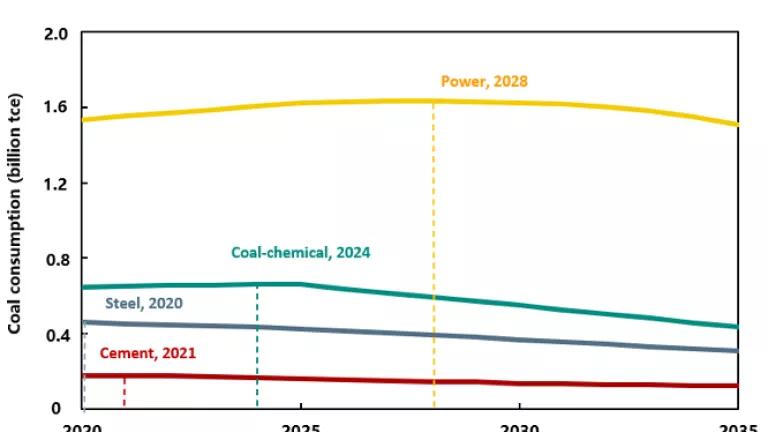China Outlines Additional Steps on Climate Action
At the Climate Ambition Summit 2020 on the five-year anniversary of countries agreeing to the Paris Agreement, Chinese President Xi Jinping announced that China would take additional steps to deliver its 2030 ambitions.

At the Climate Ambition Summit 2020 on the five-year anniversary of countries agreeing to the Paris Agreement, Chinese President Xi Jinping announced that China would take additional steps to deliver its 2030 ambitions. This shows some progression from China’s original climate targets, but more decisive near-term action is needed in the coming months.
Specifically, President Xi committed to (read the speech here) - values compared to 2005 levels:
- Reduce carbon intensity by over 65% by 2030 (compared to its initial commitment of 60-65%)—it was at 48.1% at the end of 2019;
- Increase non-fossil energy to around 25% by 2030 (compared to 20% in their current target)—it was at 15.3% at the end of 2019;
- Increase forest stock volume to 6 billion cubic meters by 2030 (compared to 4.5 billion in their current target)—it was approximately 4.5 billion cubic meters at the end of 2019; and
- Increase total installed capacity of wind and solar to 1,200 gigawatts by 2030 (no previous target)—it was at 415 gigawatts at the end of 2019.
These new targets provide some additional clarity of how China will start to bend its emissions and reshape its economy to orient toward the goal of carbon neutrality, but additional targets will be needed in the coming months. China’s near-term targets through its 14th Five-Year plan and its enhanced nationally determined contribution (NDC) at COP26 will be vitally important to achieve near-term alignment with its long-term carbon neutrality target.
At his September address to the UN General Assembly, President Xi announced that China would aim to “achieve carbon neutrality before 2060.” This unexpected announcement provided a much needed boost to global efforts to tackle climate change in a year in which the pandemic has challenged countries’ ability to work together to address important global challenges.
Key near-term milestones critical for a carbon-neutral future
While today’s announcement is a step forward, key near-term targets being decided in the coming months will require greater ambition in order to fully align with China’s goal of achieving carbon neutrality before 2060. The first and foremost of these decisions will be the overall trajectory established in the National 14th Five-Year Plan for Economic and Social development expected in March of next year.
China has a major opportunity in the overall plan to demonstrate its commitment to accelerate away from coal and toward clean energy and align with its vision of carbon neutrality. For example, China could establish a cap for CO2 emissions around 10 billion tons per year by 2025, as suggested by Energy Foundation China (see figure below), and to set targets for controlling its emissions of powerful non-CO2 greenhouse gases such as methane, nitrous oxide, and hydrofluorocarbons. Former Australian Prime Minister Kevin Rudd recently recommended that China “commit to a cap of 10 billion tons of carbon dioxide emissions by 2025, and … control non-carbon dioxide emissions at two billion tons.”
Analysis by NRDC and NewClimate Institute found that by peaking its CO2 emissions in 2025 and capping coal consumption this year, China could cut its CO2-equivalent emissions by approximately 2.5 billion tons per year by 2030, which would promote significantly greater alignment with the goal of carbon neutrality. And by committing to a cap on non-CO2 emissions, China could cut an additional 0.7 billion tons of CO2-equivalent emissions per year by 2030.
China will have additional opportunities to set targets and policies to align with its carbon neutrality pledge in the subsequent sectoral and provincial five-year plans to come out later in 2021 and early 2022. The 14th Five-Year Plans for Energy Development and for Electricity Development, both expected in late 2021, will set key targets for coal and non-fossil energy. China has a significant opportunity to set a target for reducing the share of coal in its energy consumption from the current 57% to less than 50% by 2025 and to reduce its coal consumption to 3.8 billion tons or less by 2025, starting coal on the downward trajectory needed to meet carbon neutrality.
In the power sector, peaking carbon and achieving carbon neutrality will require limiting new coal power plant construction so that total capacity does not exceed 1150 GW, and reviewing existing approvals of coal plants for their consistency with the new carbon neutrality goal. By doing so, China can redirect finance towards low carbon technologies, doubling installation rates for wind (including the quickly growing offshore wind sector), solar, storage, and smart and flexible grid technologies that will enable the shift to a zero-carbon electricity system.
In industry, China, as the largest producer of iron and steel, cement, aluminum and most other major commodities, can also lead on piloting and scaling up the deployment of low carbon technologies such as iron and steel produced by green hydrogen and green electricity, building on its strong foundation in scaling up wind and solar manufacturing and deployment, and its ability to scale up and reduce the price of technologies such as electrolyzers that will be needed to produce green hydrogen at scale.
Provincial-level plans for environmental protection, carbon peaking, and energy development should also set strong targets for coal reduction and the shift to renewable energy to support the delivery of China’s 2030 and 2060 climate goals while positioning provinces well in the global transition to low-carbon growth. Provinces that have based their economic development primarily on coal, oil, and gas will need to think seriously about how to manage the transition to non-fossil energy based economic development, including how to best manage the social and economic transition and reduce risks from stranded assets.
Investing overseas for a carbon-neutral future
While President Xi’s announcement outlined a scale-up in domestic renewable energy capacity, similar commitments were not made to scale up China’s renewables efforts in its Belt and Road Initiative (BRI). China is a leader in solar, wind and smart grid and storage technology, and its efforts to help developing countries scale up these clean technologies could assist them in building the energy infrastructure to power their economic growth in a way that avoids carbon lock-in. At present, while Chinese enterprises and banks have been building more solar and wind projects in countries such as Vietnam, Egypt, and Myanmar, the majority of its overseas power investments are still in fossil fuels.
Some progress but more decisive near-term action needed
Today’s announcement by President Xi signals China’s continued intention to actively fight climate change and shift its economy toward a carbon-neutral future. China’s commitment to achieve carbon neutrality before 2060 was a game-changer; the challenge now will be to set forth stronger near-term domestic and international policies that can set a strong foundation for achieving this goal.





